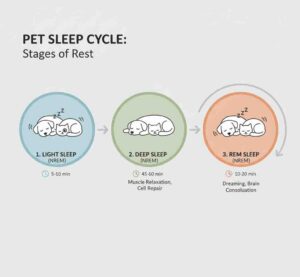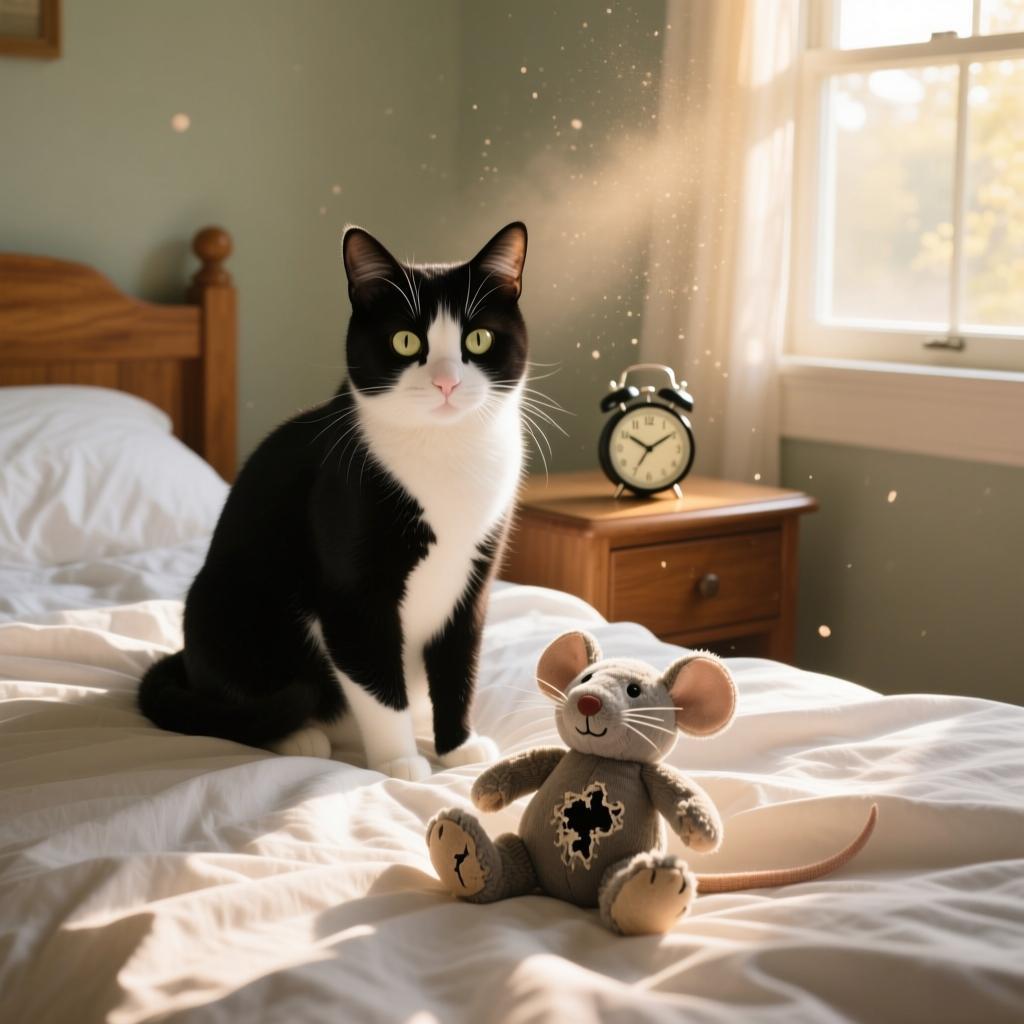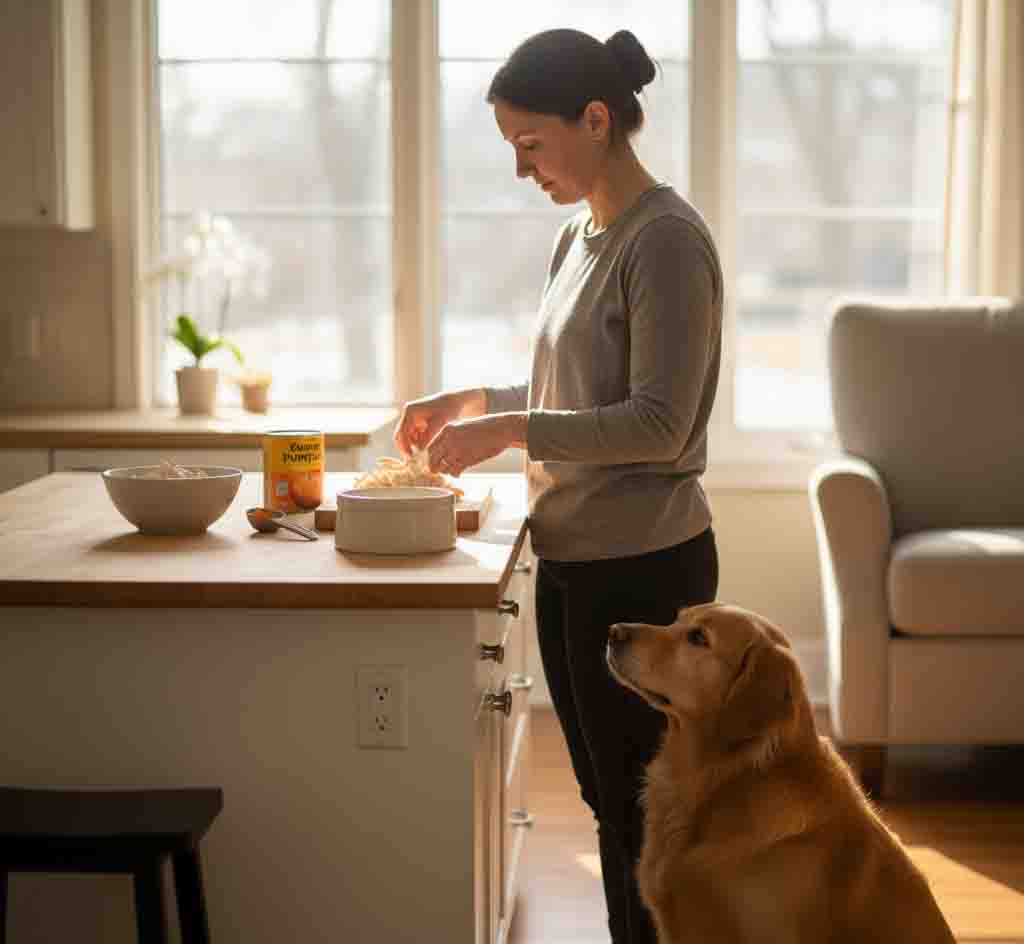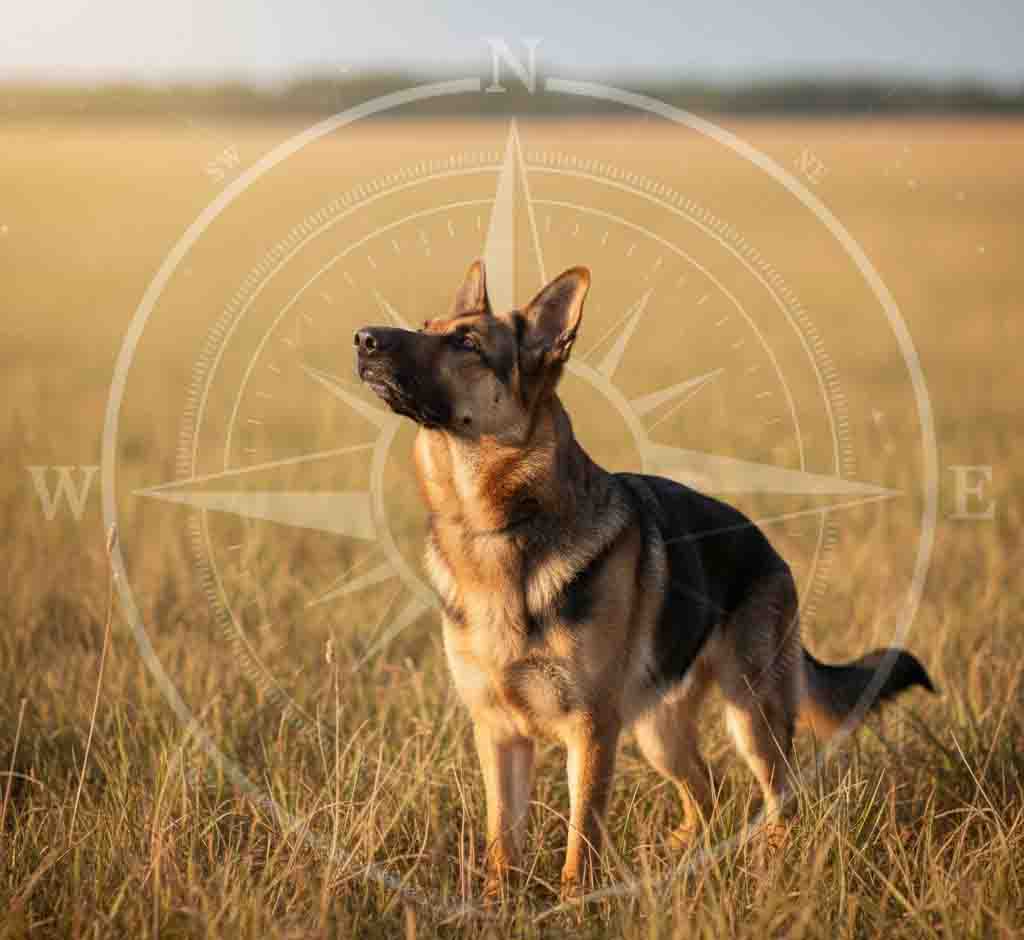It starts with a soft whimper, then the paws begin to move—a gentle paddling in the air, as if running through some invisible field. You’ve seen it: that mysterious moment when your sleeping pet seems to be living an entire secret life right before your eyes. But what’s really happening behind those closed eyelids?
As it turns out, the science of animal sleep is just as complex and fascinating as our own.
Decoding the Sleep Twitch: It’s Not Just Cute—It’s Science
When your dog’s legs start moving during sleep, you’re witnessing something remarkable. Research from MIT’s Sleep Lab reveals these twitches aren’t random muscle spasms. They’re actually linked to brain activity patterns suggesting your pet is actively processing information.
“These micro-movements during REM sleep correspond with specific brainwave patterns,” explains Dr. Samuel Chen, a veterinary neurologist. “In puppies, sleep twitches help develop neural pathways. In adult animals, they’re likely reinforcing learned behaviors and memories.”
The Architecture of Animal Sleep
Like humans, pets cycle through different sleep stages:
Light Sleep (NREM):
The dozing phase where your pet can spring awake instantly. You’ll notice regular breathing, but ears might still twitch at familiar sounds.
Deep Sleep (Slow-Wave Sleep):
This is when growth hormones are released and tissue repair occurs. Your pet’s breathing becomes deep and regular, and it’s much harder to wake them.
REM Sleep (Dream Stage):
This is when the magic happens. Brain activity spikes, eyes move rapidly beneath closed lids, and you’ll see those characteristic twitches and vocalizations. Interestingly, cats spend about 30% of their sleep in REM—compared to humans’ 25%—suggesting they might be even more active dreamers than we are.
Do Animals Really Dream?
The evidence is compelling. Brain scans of sleeping rats show patterns identical to those recorded when running through mazes while awake. Dogs display similar neurological signatures when “chasing” in dreams as when chasing actual balls.
“While we can’t know the subjective experience,” notes Dr. Chen, “the neurological evidence strongly suggests they’re reliving and processing daily experiences—playing, exploring, maybe even thinking about us.”
Creating the Ideal Sleep Environment
Understanding sleep science means we can optimize our pets’ rest:
Respect Their Natural Patterns:
Cats are crepuscular—most active at dawn and dusk. Don’t be surprised by their 3 AM zoomies; it’s in their nature. Dogs are diurnal like humans but adapt well to our schedules.
Temperature Matters:
Pets prefer slightly cooler sleeping environments (around 65-68°F or 18-20°C). This helps them maintain optimal body temperature without overheating.
The Security Factor:
Wild ancestors slept in dens for protection. Your pet still carries this instinct. Creating a designated sleep space with raised sides or a covered area can significantly improve sleep quality.
Consistency is Key:
Regular sleep schedules help regulate their circadian rhythms, leading to more restorative rest.

When to Be Concerned: Normal vs. Problematic Sleep Behaviors
While most sleep behaviors are perfectly normal, certain signs warrant attention:
Normal:
-
Occasional twitching or paddling during REM
-
Soft whimpers or muted barks
-
Changing positions frequently
-
The “running” motion while lying down
Concerning:
-
Violent thrashing that could cause injury
-
Difficulty waking or extreme disorientation
-
Loud, distressed vocalizations
-
Excessive daytime sleepiness coupled with nighttime restlessness
If you observe concerning behaviors, consult your veterinarian. Some sleep disorders in pets resemble those in humans, including sleep apnea and REM behavior disorder.
The Silent Conversation of Sleep
There’s something profoundly connecting about watching your pet sleep peacefully. That trust they display in letting their guard down completely speaks to the bond you share. Understanding the complex processes happening during those quiet hours deepens our appreciation for the rich inner lives of our animal companions.
So tonight, when you see those paws start to paddle or hear those soft sleep-whimpers, smile. You’re not just watching your pet rest—you’re witnessing the fascinating machinery of memory, learning, and perhaps even dreaming, all working to make them the wonderful companion you know and love.



